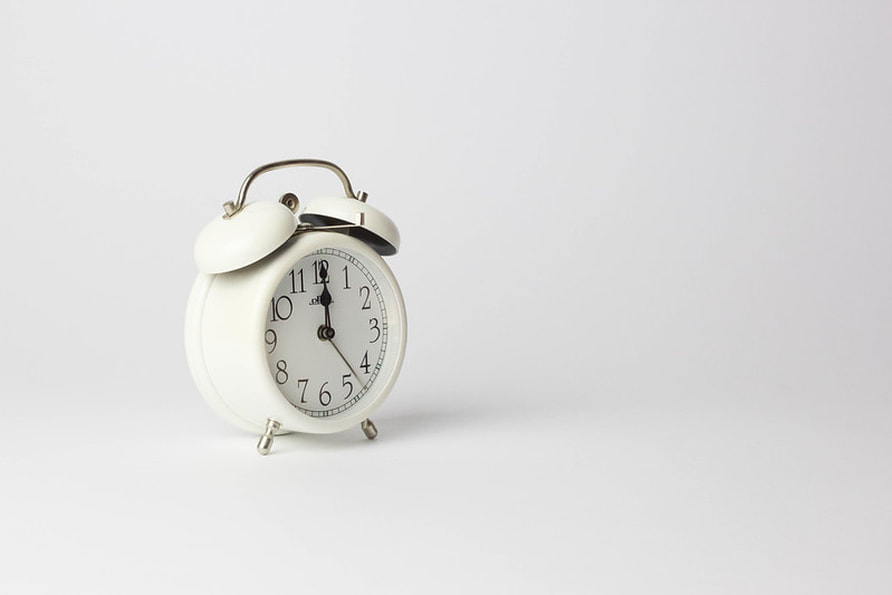|
Daylight savings in 2020 is coming to an end on 25th October in the UK. It will be time to “fall back” the clocks. It can be a dreaded time for parents of young children because with this, comes an adjustment that does not happen immediately. This is because children tend to be more structured in their bedtime and wake up around the same time each morning and that is why people usually can see a greater effect on children when the time changes.
However there are some things you can do to help make the transition to the new time go a little smoother. My recommendation is not to worry about building up to it or getting overly worried, just jump straight into it once they have changed. My best advice for children to help them with the change is to split the difference with the old time and the new time. How does that work? School Age Children - If you have a child that does not nap and normally goes to bed at 7:00 p.m., you would put him to bed at 6:30 p.m. (new time) on Sunday night, the first night of the time change. Do this for 3 nights, putting him to bed 30 minutes earlier than normal, then on the 4th night put him to bed at the normal time, 7:00 p.m. or whatever is normal bedtime for your child. Toddlers - If you have a toddler ages one and older, on Sunday the first day of the time change, you would put him down for his first nap 30 minutes earlier than normal. So if he naps usually at 11:30 a.m. put him down at 11:00 a.m. You would do the same with the afternoon nap if he takes an afternoon nap. For bedtime, if his normal bedtime is 7:00 p.m., you would put him down at 6:30 p.m. Do this for 3 nights after the time change and then on the 4th night, put him to bed at 7:00 p.m. and on 5th day move naptimes back to normal time. So if your child naps at 11:30 a.m. put him down at 11:30 a.m. and so on with the rest of the day. Infants - If you have a baby and his bedtime and naps have become predictable (usually over 6 months old) meaning he is always going to bed around the same time each day. For example if bedtime is normally 7:00 p.m. move bedtime 15 minutes later each night until you reach the normal time again. So the first night you would put him down at 6:15 p.m. (new time, but is actually 7:15 p.m. old time) the second night 6:30 p.m., and so on. On the fourth night you should be back to 7:00 p.m. Do the same thing for naps. Start 45 minutes earlier than normal and move them 15 minutes later each day. So if morning nap is at 9:00 a.m. normally, start with 8:15 a.m. on Sunday, 8:30 a.m. on Monday, 8:45 a.m. on Tuesday and then 9:00 a.m. on Wednesday. Do the same for the afternoon nap. If their bedtime and naptimes are not predictable (0-6 months old) simply jump to the new time Sunday night as if you were traveling to a new time zone and use their wake time window (awake time between sleep periods) as your guide. A great thing about this time change is that there are more hours of darkness which helps make this transition a little easier. If your child wakes up too early, walk them back to their room and tell them it’s not time to get up yet. If your child wakes up too early and is in a crib, be sure to help his body understand it isn’t morning time by keeping him in his crib in the dark room until normal wake time and then do a dramatic wake up at the new 6 a.m. or later. Note for Toddlers/School-aged children: If you have a toddler or an older child who relies on a clock to know when their “morning time” has arrived, set the clock one half hour ahead of the new time so that it reads 7:00 a.m. at the new time of 6:30 a.m. Allow your child to wake a bit earlier than normal (they will think it is 7:00 according to the clock but it will be 6:30 a.m., new time). This will only be temporary as your child adjusts to wake at their usual 7:00 a.m. time after about one or two weeks. It may take children and babies a bit more time to fall asleep, this is normal, since the time is different initially they might seem tired earlier. It usually takes about a week for children and babies to completely adjust to the new time, some children it can take up to a month. Be patient and stay very consistent, it will happen Comments are closed.
|
Categories
All
|
Site Links |
Copyright © - Nadia Edwards 2024, 3 Northbank Road, Cairneyhill, Dunfermline, Fife, KY128RN | Sitemap




